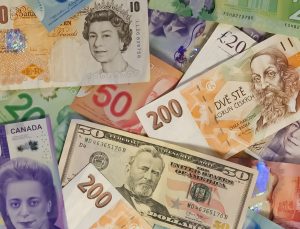Foreign exchange, or forex, is the largest and most liquid market in the world, with daily trading volumes exceeding $5 trillion. This market is characterized by high volatility and high leverage, which can lead to both significant profits and losses. One of the key factors that impact forex trading is the size of the margins, which can vary widely depending on various factors. In this article, we will explore why margins get so big in forex and what traders need to know to manage them effectively.
What are margins in forex trading?
Before diving into the reasons why margins get so big in forex, let’s first understand what margins are in the context of forex trading. A margin is a percentage of the total trade value that a trader must deposit as collateral to open a position. The margin serves as a security deposit for the broker, ensuring that the trader has enough funds to cover any losses that may occur.
For example, let’s say a trader wants to buy 10,000 units of EUR/USD at a price of 1.2000. The total value of the trade would be $12,000 (10,000 units x 1.2000). If the broker requires a margin of 2%, the trader would need to deposit $240 ($12,000 x 0.02) to open the position.
Margins can vary depending on the broker and the trading platform used. Some brokers may require higher margins for more volatile currency pairs or for traders with a higher risk profile.
Why do margins get so big in forex?
1. High volatility
Forex is known for its high volatility, which can cause prices to fluctuate rapidly and unpredictably. This volatility can make it difficult for traders to predict the direction of the market and can lead to significant losses if trades are not managed properly.
To manage this risk, brokers may require higher margins to open positions in volatile currency pairs. Higher margins provide a buffer against potential losses and ensure that the trader has enough funds to cover any adverse price movements.
2. High leverage
Forex trading allows traders to use leverage, which means that they can control larger positions than their account balance would otherwise allow. For example, if a trader has a $1,000 account balance and uses leverage of 1:100, they can control a position worth $100,000 (100 x $1,000).
While leverage can amplify profits, it can also magnify losses. This is because the trader is essentially borrowing funds from the broker to open a position, and any losses incurred will be deducted from the trader’s account balance.
To manage the risks associated with high leverage, brokers may require higher margins for traders who use leverage. This ensures that the trader has enough funds to cover any potential losses and reduces the risk of a margin call.
3. Regulatory requirements
Forex trading is subject to regulatory requirements in many jurisdictions, which can include minimum margin requirements. For example, in the United States, the Commodity Futures Trading Commission (CFTC) requires forex brokers to maintain a minimum margin of 2% for major currency pairs and 5% for exotic currency pairs.
These regulatory requirements are designed to protect traders from excessive risk and to ensure the stability of the forex market. While they may result in higher margins for traders, they also provide a level of protection against excessive leverage and potential losses.
How to manage margins in forex trading
Managing margins is an essential part of successful forex trading. Here are some tips to help traders manage margins effectively:
1. Understand the margin requirements of your broker
Before opening a position, it’s essential to understand the margin requirements of your broker. This will help you calculate the amount of collateral you need to deposit and ensure that you have enough funds to cover any potential losses.
2. Use appropriate leverage
Using appropriate leverage is a critical part of managing margins effectively. While high leverage can amplify profits, it can also magnify losses. Traders should use leverage that is appropriate for their risk tolerance and trading strategy.
3. Monitor your positions closely
Monitoring your positions closely is essential to managing margins effectively. Traders should regularly review their open positions and adjust their margin requirements as needed to ensure that they have enough collateral to cover any potential losses.
4. Use stop-loss orders
Stop-loss orders can help traders manage their margins by automatically closing out positions if they reach a certain price level. This can help limit potential losses and reduce the risk of a margin call.
Conclusion
Margins can get so big in forex due to high volatility, high leverage, and regulatory requirements. While higher margins can provide a level of protection against potential losses, they can also limit the size of trades and reduce profitability. Traders should understand the margin requirements of their broker, use appropriate leverage, monitor their positions closely, and use stop-loss orders to manage margins effectively. By doing so, they can reduce the risk of a margin call and increase their chances of success in the forex market.






